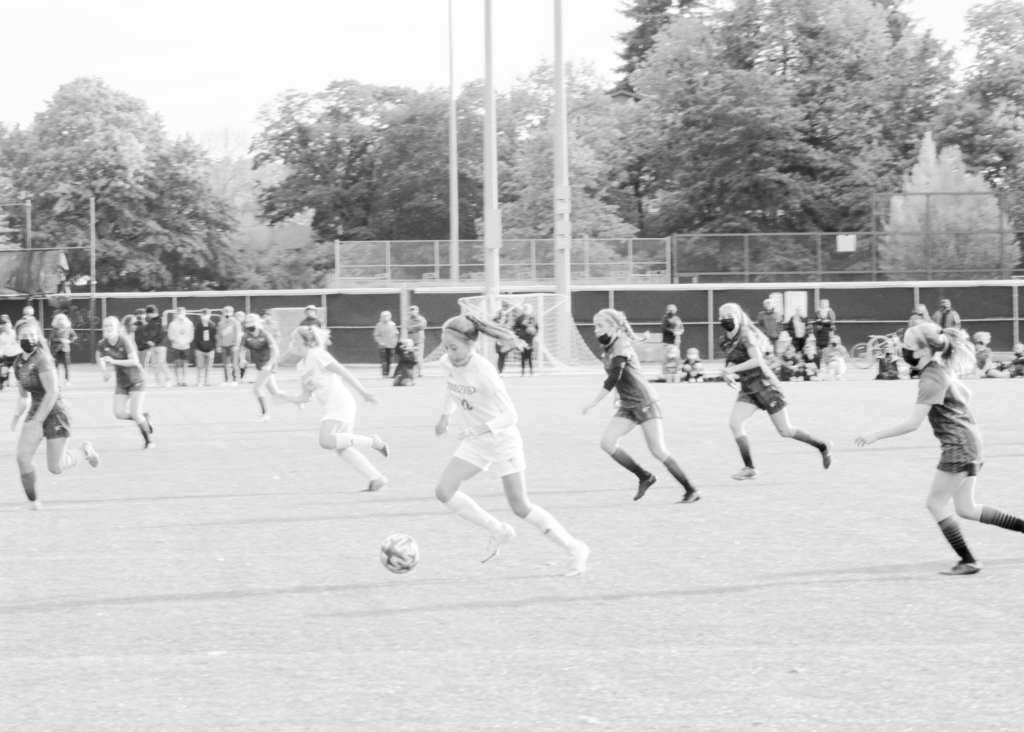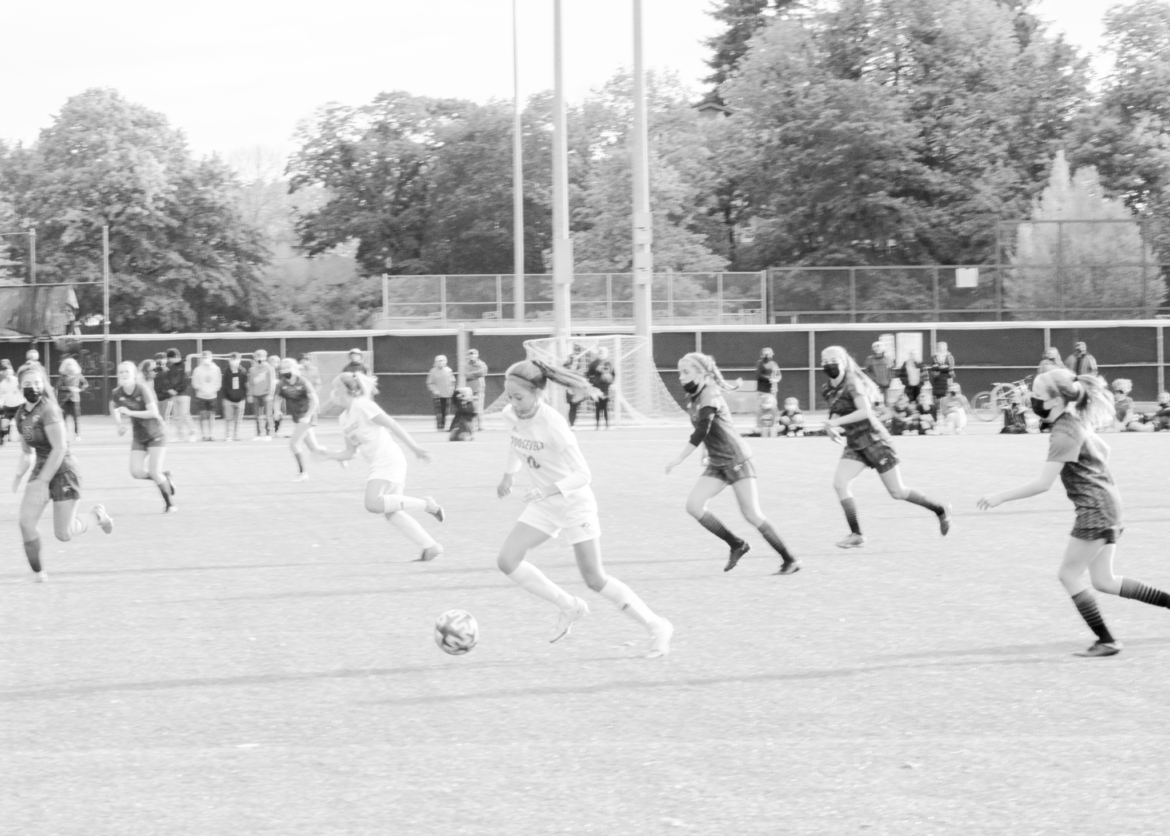Watching the opening game of the varsity women’s soccer season, the air is buzzing with excitement. Playing against the backdrop of a fading summer sunset, Roosevelt rallies to victory in a 2-1 win against Redmond on a night that marks a monumental first for the team. The difference from seasons past? The overwhelming presence of fans.
This fall, the women’s varsity soccer team experienced a significant rise in the amount of school spirit at games, with levels unparalleled to previous years.
Senior varsity captain Bella Pickett discusses this change, saying that the team has always had “a lot of dedicated fans who come to most of our games…[who] support us during the game by cheering and heckling.” However, “the attendance [this season] is the most I’ve seen in my four years. Our first game we had several past players attend and they were shocked at the attendance.”
Pickett explains that the recent shift of fan support is largely the result of differences in advertising strategy. “Games were promoted in the past by word of mouth,” she says. “There were occasional social media posts, but not much.” This year, social media has played a larger role.
Halle Sauer, also one of the team’s varsity captains, adds that “soccer girls promote the heck out of our games both on social media and through talking in classes.”
Among social media accounts posting about upcoming games this year are @rhs_asr and @rhs.rowdyriders on Instagram, with the former run by ASR and the latter representing the Roosevelt student section. The main Roosevelt women’s soccer social media account, @rhs_womens_soccer, also posts player profiles, behind-the-scenes clips from games, and graphics encouraging their fans to show up.
In years past, one of the factors often diverting attention away from the women’s soccer games has been the presence of regular football games during the same week, a result of both teams being fall sports.
It’s been a common pattern that football receives more fans at games, with many students viewing football games as an integral part of the high school experience. Soccer, in comparison, has struggled to establish that same place in Roosevelt culture.

Sienna Ward, pictured above, controls the ball during a Roosevelt women’s soccer game against Lincoln High School.
Another major element impacting fan turnout has been the time and date of sporting events. Varsity soccer games commonly take place on Tuesdays and Thursdays at 4 p.m. or 7 p.m.
Alternatively, football games frequently take place on Fridays around 7 p.m. Sophomore Leah Silver-Fajardo says, “personally, I would rather go to a sports game on a Friday or a weekend because it’s easier when there isn’t school the next day.” When games start after school in the middle of the week, many students have sports practices, clubs, or homework restricting them from attending.
Pickett feels that the attendance of games could easily be improved. “Most of our games are at 7 p.m., the football team practices before, so they are already at the school when we kick off,” she says.
Similarly, Sauer believes that if men’s sports coaches encourage players to attend varsity soccer games, it would likely improve student turnout. “I think it would be nice if [the football players] were pushed by their coaches to come support other teams if they want fans to come to theirs,” she states.
As the season comes to a close, the women’s varsity soccer team stays firm in their use of social media as a long term tool to increase fan numbers, hoping to see continuous growth in turnout over the coming years and deep-rooted change in students’ commitment to providing support to all sports.


